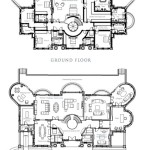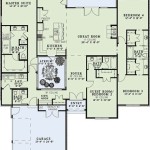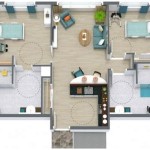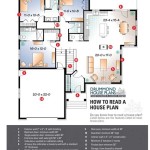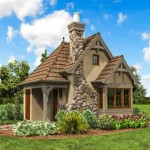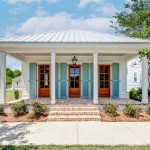Inlaw Suite House Plans are architectural designs that incorporate a separate, self-contained living space within a single-family home. These suites provide additional accommodation for elderly parents, extended family members, or adult children who may require privacy, accessibility, or assistance with daily living.
Inlaw suites typically include a bedroom, bathroom, kitchenette, and living area, and are designed to seamlessly integrate with the main house while offering a comfortable and private living space for their occupants. They can be located on the main floor or in an upper level of the home, and are often equipped with accessibility features such as wider doorways, grab bars, and ramps.
In the following sections, we will explore the benefits and considerations of incorporating an inlaw suite in a house plan, and provide practical tips for designing and constructing this type of living space.
When considering inlaw suite house plans, several key points should be taken into account:
- Accessibility and Safety
- Privacy and Independence
- Comfort and Convenience
- Cost and Maintenance
- Future Flexibility
- Resale Value
- Legal and Building Codes
- Professional Design
By carefully addressing these factors, homeowners can create an inlaw suite that meets the needs of both generations while enhancing the overall functionality and value of their home.
Accessibility and Safety
Inlaw suites should be designed with accessibility and safety in mind, especially if they are intended for elderly or disabled occupants. This includes:
- Wide Doorways and Hallways: Ensure that all doorways and hallways are wide enough to accommodate wheelchairs and walkers. A minimum width of 36 inches is recommended.
- Non-Slip Flooring: Choose flooring materials that are slip-resistant to prevent falls. Consider using textured tile, rubber flooring, or carpet with a non-skid backing.
- Grab Bars and Handrails: Install grab bars in the bathroom, shower, and other areas where support is needed. Handrails should also be placed along stairs and ramps.
- Accessible Showers: Design showers with no-threshold entries, grab bars, and a built-in seat for added safety and convenience.
In addition to these specific features, the overall layout of the inlaw suite should be designed to minimize obstacles and promote ease of movement. This may include avoiding sharp corners, providing clear pathways, and ensuring that all essential areas are easily accessible.
Privacy and Independence
Privacy and independence are essential considerations when designing an inlaw suite. The suite should provide a sense of autonomy and privacy for its occupants, while still allowing for interaction and support when desired.
Separate Entrance and Exit: Providing a separate entrance and exit for the inlaw suite allows occupants to come and go without disturbing the main house. This can be especially important for maintaining independence and reducing feelings of isolation.
Soundproofing: Soundproofing the inlaw suite can help to ensure privacy and minimize noise disturbances. This can be achieved through the use of soundproofing materials in walls, ceilings, and floors, as well as by installing soundproof windows and doors.
Separate Kitchen and Laundry: Having a separate kitchen and laundry area within the inlaw suite allows occupants to prepare meals and do laundry independently. This promotes a sense of self-sufficiency and reduces the need for assistance with daily tasks.
In addition to these physical design elements, it is also important to establish clear boundaries and expectations regarding privacy and independence. This can include setting rules for shared spaces, respecting each other’s schedules, and providing ample opportunities for both interaction and solitude.
Comfort and Convenience
Inlaw suites should be designed to provide comfort and convenience for both occupants and caregivers. This includes:
- Natural Lighting and Ventilation: Large windows and skylights can provide ample natural lighting, reducing the need for artificial light and creating a more cheerful and inviting space. Proper ventilation is also essential for maintaining air quality and comfort.
- Comfortable Furnishings: Choose comfortable and supportive furniture that is appropriate for the age and mobility of the occupants. This may include adjustable beds, lift chairs, and ergonomic seating.
- Smart Home Technology: Smart home technology can enhance comfort and convenience in the inlaw suite. This may include automated lighting, temperature control, and security systems that can be controlled remotely or by voice commands.
- Outdoor Living Space: If possible, provide an outdoor living space for the inlaw suite, such as a private patio or balcony. This can provide a place for occupants to relax, enjoy fresh air, and socialize.
Beyond these specific features, the overall design of the inlaw suite should prioritize comfort and ease of use. This may include avoiding sharp edges and tripping hazards, providing ample storage space, and ensuring that all essential amenities are within easy reach.
Cost and Maintenance
Inlaw suite house plans can vary significantly in cost depending on the size, complexity, and features included. The cost of construction will typically be higher than that of a traditional home addition, due to the need for separate utilities, plumbing, and HVAC systems. However, the long-term savings in assisted living or nursing home care can offset the initial investment.
Maintenance costs for an inlaw suite will also be higher than for a traditional home addition. This is due to the additional systems and appliances that need to be maintained. It is important to factor in the ongoing costs of utilities, repairs, and replacements when budgeting for an inlaw suite.
There are several ways to reduce the cost of an inlaw suite. One is to choose a smaller size and simpler design. Another is to use energy-efficient appliances and materials. Additionally, it is important to consider the long-term savings in assisted living or nursing home care when making financial decisions.
Inlaw suite house plans can be a cost-effective way to provide housing for elderly parents or other family members who need assistance with daily living. By carefully considering the costs and maintenance requirements, homeowners can create a comfortable and affordable living space that meets the needs of both generations.
Future Flexibility
Inlaw suite house plans should be designed with future flexibility in mind. This means that the suite should be able to adapt to changing needs over time. For example, the suite may need to be converted into a guest room, a home office, or a rental unit in the future.
- Modular Design: A modular design allows the inlaw suite to be easily reconfigured or expanded in the future. This can be achieved by using movable walls, partitions, or prefabricated units.
- Multi-Purpose Spaces: Design the inlaw suite with multi-purpose spaces that can be used for a variety of purposes. For example, a guest room can also be used as a home office or a den.
- Accessible Design: Incorporate accessible design features into the inlaw suite, such as wider doorways, grab bars, and roll-in showers. This will make the suite more adaptable to the needs of elderly or disabled occupants in the future.
- Separate Utilities: Installing separate utilities for the inlaw suite will allow it to be easily converted into a separate rental unit or guest house in the future.
By designing the inlaw suite with future flexibility in mind, homeowners can create a space that will meet their needs for many years to come.
Resale Value
The resale value of a home with an inlaw suite can be affected by a number of factors, including the size, location, and features of the suite. In general, a well-designed inlaw suite can add value to a home, especially if it is in a desirable location and meets the needs of potential buyers.
One of the key factors that affects the resale value of a home with an inlaw suite is the size of the suite. A larger suite will typically add more value than a smaller suite. However, it is important to strike a balance between size and functionality. A suite that is too large may be too expensive to build and maintain, and it may not be as appealing to potential buyers who are looking for a more compact and affordable living space.
The location of the inlaw suite is also an important factor to consider. A suite that is located on the main floor will typically add more value than a suite that is located in the basement or attic. This is because a main-floor suite is more accessible and convenient for both occupants and caregivers.
The features of the inlaw suite will also affect its resale value. A suite that is well-equipped with amenities such as a full kitchen, bathroom, and laundry room will be more appealing to potential buyers than a suite that is lacking these features.
Legal and Building Codes
Inlaw suite house plans must comply with all applicable legal and building codes. These codes may vary depending on the location of the property and the specific requirements of the local jurisdiction.
One of the most important legal considerations is zoning. Zoning laws regulate the use of land and buildings in a specific area. In some cases, zoning laws may restrict the construction of inlaw suites. It is important to check with the local zoning board to determine if an inlaw suite is allowed on the property in question.
Building codes are another important consideration. Building codes ensure that buildings are safe and habitable. Inlaw suites must meet the same building codes as other residential structures. This includes codes related to structural integrity, fire safety, and accessibility.
In addition to zoning laws and building codes, there may be other legal requirements that apply to inlaw suites. For example, some jurisdictions may require that inlaw suites have separate utility meters or that they be registered as separate rental units. It is important to be aware of all legal requirements before constructing an inlaw suite.
Failure to comply with legal and building codes can result in fines, penalties, and even the removal of the inlaw suite. It is important to work with a qualified contractor who is familiar with the applicable codes and regulations.
Professional Design
Professional design is essential for creating an inlaw suite house plan that meets the needs of both generations. A qualified architect or designer can help to ensure that the suite is safe, accessible, comfortable, and aesthetically pleasing.
One of the most important aspects of professional design is space planning. The architect or designer will work with the homeowners to determine the best layout for the suite, taking into account the needs of the occupants and the available space. The suite should be designed to maximize natural light and ventilation, and to minimize noise and privacy concerns.
Another important aspect of professional design is the selection of materials and finishes. The architect or designer will help the homeowners to choose materials that are durable, easy to maintain, and aesthetically pleasing. The suite should be designed to be both comfortable and stylish, and to reflect the tastes of the occupants.
Professional designers can also help to incorporate accessibility features into the inlaw suite. This may include wider doorways, grab bars, and roll-in showers. Accessibility features can help to ensure that the suite is safe and comfortable for occupants of all ages and abilities.










Related Posts

